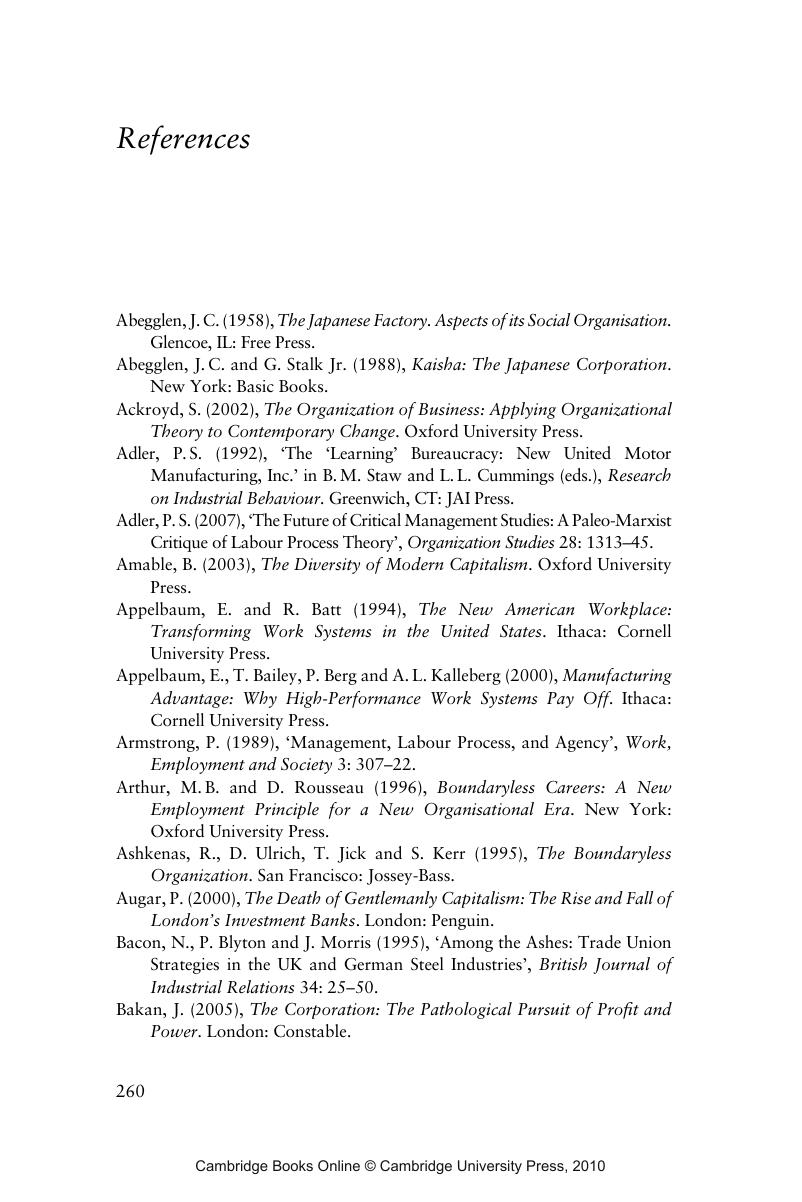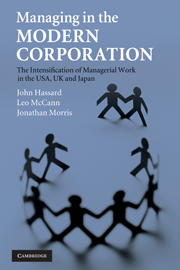Book contents
- Frontmatter
- Contents
- Acknowledgements
- About the cover
- 1 Going under the knife: Downsizing and de-layering the modern corporation
- 2 Exploring corporate life: A realist view on management restructuring
- 3 Living in the house that Jack built: Management restructuring in America
- 4 Maximising shareholder value: Management restructuring in Britain
- 5 New world of the salaryman: Management restructuring in Japan
- 6 Fighting back? Addressing the human costs of management restructuring
- Appendix
- References
- Index
- References
References
Published online by Cambridge University Press: 09 February 2010
- Frontmatter
- Contents
- Acknowledgements
- About the cover
- 1 Going under the knife: Downsizing and de-layering the modern corporation
- 2 Exploring corporate life: A realist view on management restructuring
- 3 Living in the house that Jack built: Management restructuring in America
- 4 Maximising shareholder value: Management restructuring in Britain
- 5 New world of the salaryman: Management restructuring in Japan
- 6 Fighting back? Addressing the human costs of management restructuring
- Appendix
- References
- Index
- References
Summary

- Type
- Chapter
- Information
- Managing in the Modern CorporationThe Intensification of Managerial Work in the USA, UK and Japan, pp. 260 - 273Publisher: Cambridge University PressPrint publication year: 2009



